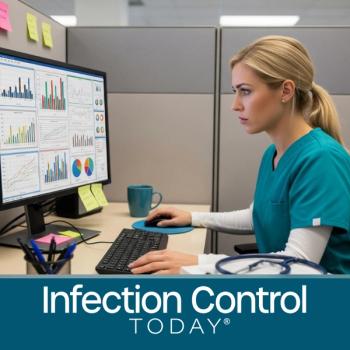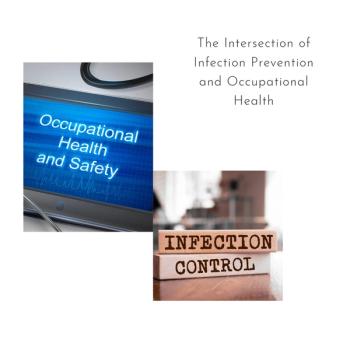
A Spectroscopic Solution for Strain Typing and Discrimination
Infrared (IR) spectroscopy demonstrates promise for rapid strain typing of yeast and bacteria, which could help improve proactive infection control strategies in health care settings.
Introduction
Antimicrobial resistance (AMR) is one of the greatest public health threats facing humanity.1 In addition to contributing to the deaths of more than 1.2 million people each year,2 AMR also carries a substantial economic cost and is associated with disease-related morbidity. Though some superbugs have become the poster-germs for AMR—think methicillin-resistant Staphylococcus aureus (MRSA) and Neisseria gonorrhea infections—the problem extends far beyond these notorious cases and is not limited to bacterial infection.
Candida auris is a type of yeast that was first reported in Japan in 2009,3, but retrospective analyses of South Korean bloodstream isolates suggest that the earliest known case occurred in 1996.4 Today, C auris has spread to over 30 countries across 6 continents5 and can be life-threatening. C auris is often resistant to all 3 classes of antifungal drugs (azoles, polyenes, and echinocandins) and spreads easily in hospital environments via colonized patients and contaminated surfaces or equipment.
C auris was first reported in America in 2015. In July 2020, more than 1,000 cumulative cases had been attributed to Los Angeles County alone.7 Outbreaks of multidrug-resistant microbes like C auris in the US highlight the need for instruments that can identify microbial species quickly to inform the correct course of action.
Typing technologies
Traditional strain-typing technologies like pulsed-field gel electrophoresis, multi-locus sequence typing, latex agglutination, and whole-genome sequencing are time-consuming and resource-intensive. These technologies are also not readily available in all microbiology laboratories.
Easily applied typing methods will be central for further characterization of AMR organisms quickly and reliably – and Fourier-transform infrared (FT-IR)-based strain typing is showing promise. FT-IR is relatively simple to use when compared with more traditional methods and offers strain differentiation at high throughput and a low cost per sample. FT-IR spectroscopy measures the molecular vibrations associated with the absorption of IR light. Different chemical structures vibrate at different frequencies– as an example, the carboxyl group in fatty acids and lipids vibrates at 2800–3000 cm–1, while the amide group in proteins vibrates at 1500–1800 cm–1. IR-based strain typing works by measuring the absorbance over the whole wavenumber range to produce a molecular fingerprint for a given sample. Microorganisms can be classified through fingerprint variation, particularly in the absorption range belonging to the polysaccharide region. This part of the spectrum provides information about the carbohydrates present in many molecules such as membrane glycoproteins.
Definitive species identification
FT-IR methods can be combined with matrix-assisted laser desorption/ionization-time of flight (MALDI-TOF) mass spectrometry techniques for parallel microbial species identification.
Matrix-assisted laser desorption/ionization-time of flight (MALDI-TOF) mass spectrometry (MS) is a reliable technique that can be used to identify microbes at the species or genus level directly from culture plates or patient blood cultures. By analyzing primarily, the ribosomal proteins, MALDI-TOF MS can determine the unique proteomic fingerprint of a microorganism. The fingerprint spectrum obtained is then matched with a reference library for identification. Recent advances have led to robust, high-performance MALDI-TOF systems capable of identifying thousands of microbial species; some can identify specific AMR markers or activities in the same workflow. These systems boast higher accuracy, faster time-to-result, and lower costs when compared with classical identification methods,7 which may explain their routine use in many microbiology labs.
Microorganism identification and strain discrimination at Cedars Sinai
Cedars-Sinai Medical Center, a non-profit academic health care organization that serves the diverse Los Angeles community and beyond, has introduced comprehensive measures to combat the challenges posed by C auris. Because C auris shares similar characteristics with other species of Candida, identification with traditional methods or the latest fluorogenic and biochemical tests is hindered. Researchers at Cedars-Sinai are turning their attention toward innovative approaches that can distinguish C auris, including next-generation sequencing, IR spectroscopy and MALDI-TOF MS.
Work conducted at Cedars-Sinai has helped guide the way for clinical applications of MS and IR in California. It is the first laboratory in California to acquire a MALDI-TOF MS system for species- and genus-level microorganism identification, which allows for unambiguous identification of C auris at species level. Cedars-Sinai was also the first center in the USA given the opportunity to evaluate a newly available FT-IR spectroscopy system for deeper strain typing. Initial work with this system focused on outbreaks of gram-negative rod bacteria (such as Pseudomonas aeruginosa) and Gram-positive cocci (like Staphylococcus aureus), which then led to its use in C auris strain typing and classification.
IR spectroscopy became a well-established method for the routine testing of C auris at Cedars-Sinai by 2019, but the emergence of COVID-19 presented unprecedented obstacles to research, including restrictions on travel and access to labs. By late 2020, most of the available funding had, understandably, been diverted to fight SARS-CoV-2, though the Center had just declared multidrug-resistant C auris a significant threat in hospitals and long-term care facilities. Researchers at Cedars-Sinai were determined to establish a method for C auris detection to prevent transmission by testing high-risk patients prior to hospital admission.
A 2-step approach to C auris
The Cedars-Sinai team implemented a reverse transcription polymerase chain reaction (RT-PCR) test to identify C auris, which provided a valuable screening, but another layer was needed to provide a higher level of surveillance. Today, Cedars-Sinai researchers have a 2-step diagnostic process for C auris detection. Step 1: C auris is detected via axilla or groin swabs using RT-PCR; the speed of RT-PCR and its applicability without the need to isolate C auris allows researchers to quickly identify at-risk patients and place them under the appropriate contact prevention precautions. Step 2: strain typing via IR spectroscopy, starting from culture and subsequent biosurveillance. The obtained spectra are compared with existing sequencing data using statistical tests like hierarchical clustering and principal components analysis.
This system distinguishes between different Candida and other yeast organisms and acts as an early warning system to guide clinical decisions when speed is crucial to improving outcomes. Researchers at Cedars-Sinai have seen promising results and recently used their 2-step system to identify 28 C auris-positive specimens in more than 700 at-risk patients over the course of a year, equating to a 4% positivity rate.8
The institute has built a database of everyone admitted to Cedars-Sinai who tested positive for C auris. This valuable resource will help to identify possible future outbreaks rapidly.
Identifying Salmonella
Researchers at Cedars-Sinai have also used MALDI-TOF to identify Salmonella species in stem cell cultures from patients undergoing autologous stem cell transplant.9 Infection with Salmonella is a leading cause of acute diarrheal disease and can have a clinical presentation that ranges from gastroenteritis to life-threatening fever.10 The main source of infection in the developed world is food (typically eggs, meat, dairy products, and vegetables) and water, leading to multiple outbreaks in recent years. 2 notable outbreaks occurred in the US in 2019: one was caused by backyard poultry contact and the other by fresh vegetables. Both outbreaks led to over 1,000 individual cases, and the former spread to 49 states.11 Salmonella outbreaks in hospital settings can lead to serious illness and death.
The unusual Salmonella cultures at Cedars-Sinai were taken from 2 patients undergoing peripheral stem cell collection. The patients, both women, were aged 65 and 45 years old, with a history of multiple myeloma and aplastic anemia, respectively. Cultures from 2 separate collection days were found to be positive for Salmonella group D in both patients, but the cultures demonstrated different clustering and drug susceptibilities. Subsequent FT-IR analysis made sense of this finding by identifying distinct Salmonella enterica subspecies in the samples taken from each patient.12 A common source for these infections was deemed extremely unlikely, and no critical Salmonella-related illness was apparent.
What’s next?
With pioneering medical research achievements, health care-defining education programs, and wide-ranging community benefits, Cedars-Sinai is setting new standards for quality and innovation in patient care. Following the success of its typing work with C. auris and Salmonella, the Cedars-Sinai team is now evaluating the potential of FT-IR spectroscopy to identify subspecies of Mycobacterium abscessus. This information could be used to predict the presence of clarithromycin resistance; validation of the application could thus facilitate strain typing in real-time while reducing the time taken to obtain final clarithromycin susceptibility results.
Innovative instrumentation driving rapid disease detection and informed decision-making will be essential for effectively analyzing and managing epidemiology in health care settings. Emerging challenges will require an assessment of the tools available to address tomorrow's health care challenges.
References
- World Health Organization (WHO), Antimicrobial resistance, November 17, 2021. Accessed April 2023.
https://www.who.int/news-room/fact-sheets/detail/antimicrobial-resistance - Antimicrobial Resistance Collaborators, “Global burden of bacterial antimicrobial resistance in 2019: a systematic analysis”, The Lancet, vol 399(10325) 629-655, January 19, 2022.
- Satoh K, et al. “Candida auris sp., a novel ascomycetous yeast isolated from the external ear canal of an inpatient in a Japanese hospital.” Microbiology and immunology, vol 53(1) 41–44, January 2009.
- Lee WG, et al, “First three reported cases of nosocomial fungemia caused by Candida auris”, Journal of Clinical Microbiology, vol 49(9) 3139–3142, June 29, 2011.
- Rhodes J, Fisher MC, “Global epidemiology of emerging Candida auris”, current opinion in microbiology, vol 52 84–89, July 3, 2019.
- County of Los Angeles Public Health, “Mitigating the Spread of Candida auris in Los Angeles Country”, July 2, 2022. Accessed April 2023.
http://publichealth.lacounty.gov/acd/docs/MitigatingSpreadofC.aurisLAC.pdf - Schulthess B, et al, “Use of the Bruker MALDI Biotyper for identification of molds in the clinical mycology laboratory”, Journal of clinical microbiology, vol 52(8) 2797–2803, June 2013.
- Contreras DA, Morgan MA, “Surveillance diagnostic algorithm using real-time PCR assay and strain typing method development to assist with the control of C auris amid COVID-19 pandemic”, Frontier Cell Infection Microbiology, vol 12 887754, August 31, 2022.
- Faron ML, et al, “Multicenter evaluation of the Bruker MALDI Biotyper CA system for the identification of clinical aerobic gram-negative bacterial isolates,” PLOS ONE, vol 10(11) e0141350, November 3, 2015.
- Popa GL, Papa MI, “Salmonella spp. Infection – a continuous threat worldwide,” Germs, vol 11(1) 88-96, March 15, 2021.
- Phou S, et al, “Successful autologous hematopoietic stem cell transplants using salmonella positive products collected from asymptomatic donors”, Transfusion, vol 63(4) 861-866, March 7, 2023.
- Popa GL, Papa MI, “Salmonella spp. Infection–a continuous threat worldwide”, Germs, vol 11(1) 88-96, March 15, 2021.
Newsletter
Stay prepared and protected with Infection Control Today's newsletter, delivering essential updates, best practices, and expert insights for infection preventionists.






